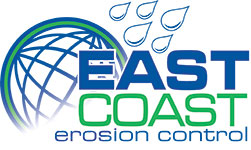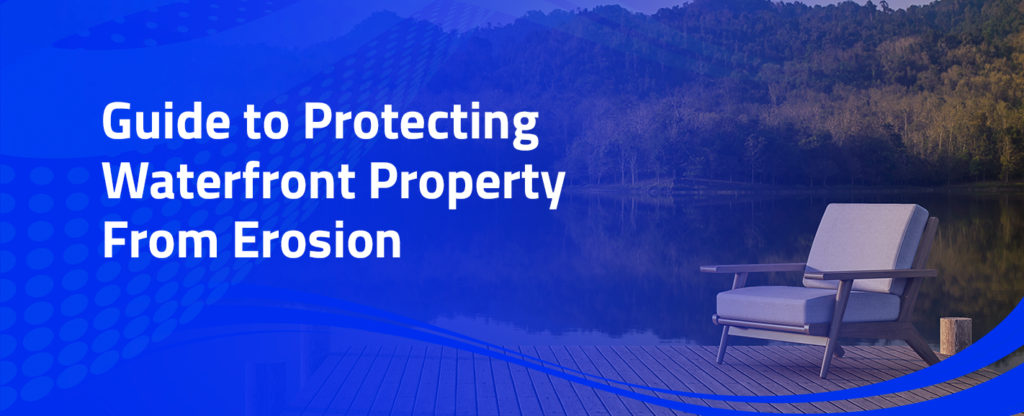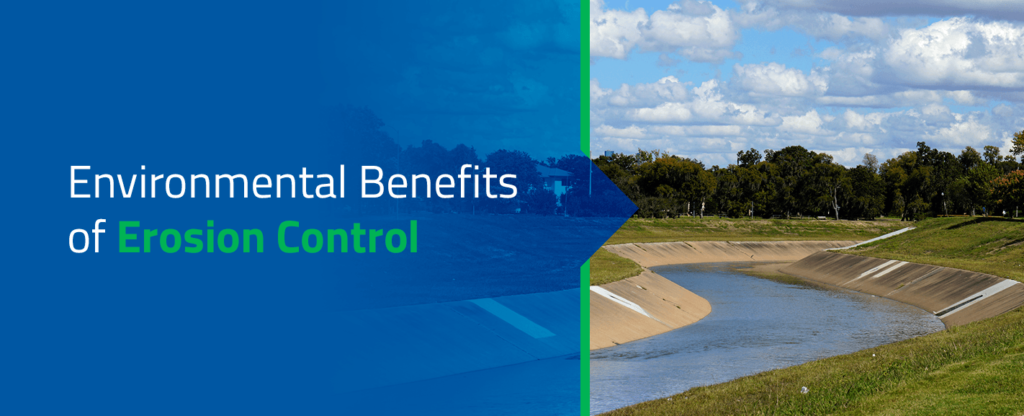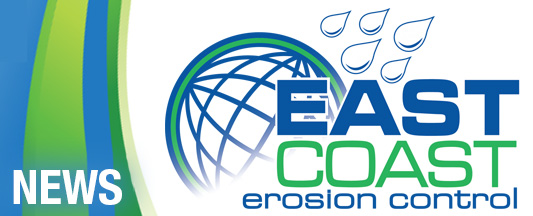Guide to Protecting Waterfront Property From Erosion
SHARE
When shoreline erosion occurs, significant problems arise for the environment and surrounding waterfront properties. Your shoreline may be impacted by various erosive forces every day, causing financial difficulties, a loss of structural integrity, environmental dangers and more. You must understand how these forces occur, their potential effects and how to prevent shoreline erosion in the future.
Our overview of the benefits, applications and potential problems for different shoreline erosion control methods can help you determine the most efficient way to prevent erosion along your property’s waterline.
What Causes Shoreline Erosion?
Shoreline erosion is a natural process that gradually removes soil from the shore. Gradual movement is expected along our shores, but human influences and specific natural causes can lead to much faster erosion of lakes, rivers, streams and coastlines. Those forms of rapid shoreline erosion present severe problems for property owners and the environment.
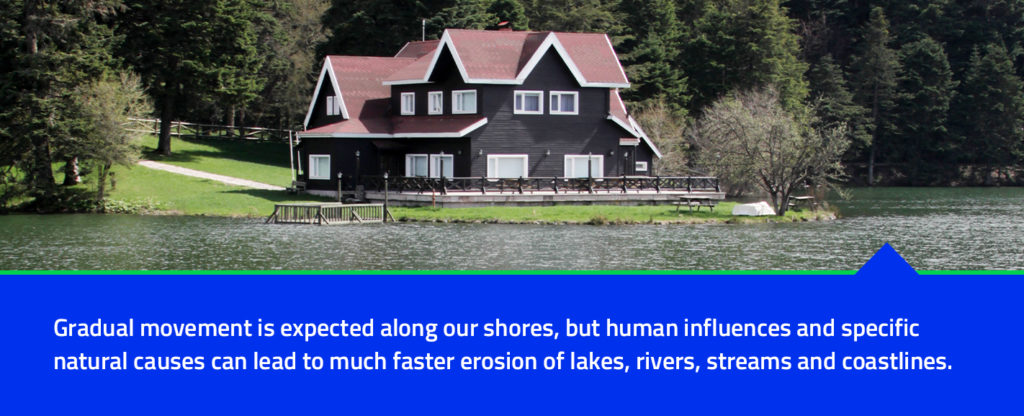
Natural Causes
Natural causes that can lead to shoreline erosion include terrestrial or land forces and aquatic or water forces. When landscaping your waterfront property, consider how these forces — including groundwater movement, temperature changes and wind currents — can cause the shoreline to erode rapidly. Some of the aquatic forces that lead to erosion include:
- Waves: Waves can swiftly displace the soil, especially in areas where the natural vegetation has been removed. Waterfront properties are prone to frequent waves caused by boats and natural occurrences, so vegetation or another control method is necessary to minimize erosion.
- Ice: Sheets of ice can be pushed up onto the shore from frozen lakes as they melt. This occurrence becomes more frequent as water levels rise. Lakeside areas with rising water levels and regular freezing temperatures are at increased risk of erosion.
- Stormwater: Depending on the property’s slope, the splash of precipitation can cause heavy displacement in loose soil. Sheet erosion happens when stormwater removes even layers of the earth and carries it in “sheets” over the property’s surface.
It’s best to address any terrestrial or aquatic landscaping concerns with a professional adviser. They can suggest a solution that safely prevents shoreline erosion at your site.
Human Influences
Erosion caused by human influence — often referred to as accelerated erosion — is much more challenging to reverse than natural erosion. Professional guidance can minimize the impacts of natural forces and avoid destructive actions that will erode the shoreline further. Human influences typically cause shoreline erosion to progress faster than natural causes, so you want to choose methods that prevent erosion rather than accelerate it.
Two destructive actions that may seem like viable solutions but will instead lead to faster shoreline erosion are:
- Removing vegetation: Plant roots create natural barriers that protect the soil and hold it in place against natural forces. Many aquatic plants grow in shallow waters, which help reduce a wave’s energy before it hits the shore. Terrestrial plants then prevent the soil from displacing under whatever manages to make contact. When vegetation is removed from the shoreline, the ground may be impacted by the waves’ full erosive force.
- Installing seawalls: A seawall is any rigid barrier installed along the shore to prevent the continuous impact of waves. Unlike the absorbent barriers created by natural vegetation, this “hardening” of the shoreline prevents wave energy absorption. The energy is typically directed downward where it scours the lake, sea or river bottom, making the body of water deeper and eventually reducing the seawall’s effectiveness. If the wave’s power is directed sideways via wave flanking, the neighboring properties will receive more erosion damages instead.
Effects of Erosion on Waterfront Properties
Shoreline erosion causes various effects on waterfront properties and their owners. As the shoreline erodes, property owners lose more and more waterfront property. Even 1 foot of shoreline recession to a 100-foot property can result in over $9,000 worth of losses on a cost-per-square-foot basis. These losses exclude any damages to nearshore buildings and structures, which may cause costly repairs and depreciation of the property’s value.
In addition to causing severe financial problems, rapid erosion can:
- Disturb the natural ecosystem
- Affect the natural resources, wildlife and water quality
- Create an unpleasant living environment
- Weaken the structural integrity of assets
- Endanger any inhabitants of nearshore buildings
Erosion indicates a weak foundation in the shoreline, which often means weakened structural integrity for waterfront properties. A compromised foundation can put nearshore buildings at risk of damages to the walls, ceiling, plumbing, gas and electrical systems. Shoreline erosion also causes problems like cloudy water and algae overgrowth in the water, which is unpleasant for property owners, visitors and wildlife.
Rather than accepting the moveable nature of shoreline property, humans have created several methods to control erosion. While some ways can be dangerous and even increase the rate of erosion, certain erosion products and control methods can help protect coastlines and property safely.
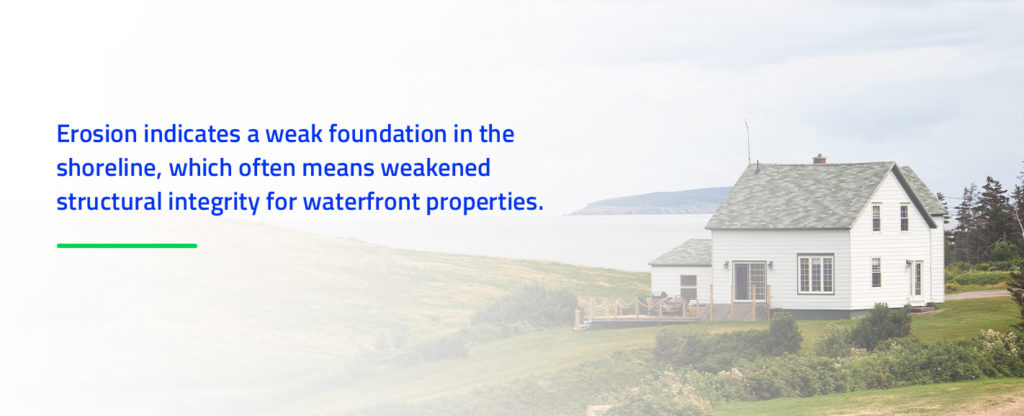
7 Shoreline Erosion Control Methods
Many methods and products exist to assist property owners looking for shoreline erosion control solutions — some more effective than others.
Each state has its own regulatory agency for shorelines which requires erosion control for various reasons, and ignoring the regulatory agency’s specifications may lead to monetary fines. Shoreline protection helps minimize dangers, protect the natural ecosystem and maintain the integrity of buildings and other structures on the property. Each stateprovides separate regulations, though most encourage using soft or natural erosion control methods over hard or structural methods.
Most property owners want an erosion control method that’s cost-effective, easy to maintain, environmentally friendly and aesthetically appealing. Manage and minimize shoreline erosion with the following preventative measures.
1. Bulkhead Rock and Seawalls
Many property owners install seawalls or bulkhead rock intending to stop shoreline erosion. Once installed, these hard methods will redirect wave energy and prevent forceful waves from causing natural erosion to the shore — for a short period. Installing stone and concrete retaining walls will eventually cause several problems for the environment and the property owner.
In a natural landscape, the shore’s gradual slope and the native vegetation will absorb the wave’s energy upon impact. Seawall erosion control causes waves to crash into the shore instead. Its structural barrier prevents the full force of the wave from hitting the coast, though it also prevents energy absorption. Seawalls must redirect the unabsorbed energy in one of two paths — downward to the body of water’s bottom or sideways to neighboring properties. Either direction can lead to increased erosion rates, structural damages and environmental harm.
When the energy is directed downward, it scours the lake, river or sea bottom and makes the water deeper. Eventually, the water will deepen enough to undercut the seawall or bulkhead and limit its effectiveness.
When the energy is directed at an angle or to the side, it will cause wave flanking, increasing the structural damage and erosion rates of neighboring properties. The initial construction and future repairs of a bulkhead or seawall can also increase erosion for your neighbors.
Bulkhead rock and seawalls are a short-term erosion control method with long-term impacts on your property, neighboring properties, and the water’s ecosystem. If you already have a retaining wall installed, consider replacing it with a more effective method. You may need to maintain a bulkhead or seawall in some locations — seek technical advice for when these shore protection alternatives may be appropriate for a particular situation.
2. Water Runoff Diversion
Increased water runoff is especially damaging to high bluffs. Implement bluff erosion control by diverting surface runoff through various means. These methods can include rain gutter outlets, a French drain installation or strategic landscaping. If runoff cannot be entirely diverted, reduce the runoff rate by creating safe routes for the water and limiting groundwater flow toward the bluff.
Other methods for how to prevent bluff erosion include:
- Retaining moisture-absorbing vegetation on the bluff
- Minimizing paved areas and hard surfaces that increase runoff
- Avoiding additional weight on the bluff edge, such as buildings, storage sheds or vehicles
- Installing septic systems, drain fields, pools and other large water containments away from the bluff
3. Rip Rap Rocks
Rip rap revetments are large rocks stacked on the sloped shoreline to help prevent natural erosion. While bulkhead rock and seawalls prevent energy absorption, rip rap rock is a “soft” method that maintains a natural slope and absorbs wave energy despite being made of concrete or stone.
Rip rap is commonly applied as reinforcement to shorelines where the underlying soil is already stable. Because of rip rap’s stacked design, the rocks are adaptable and flexible against impacting forces. Any damages can be easily corrected with minor adjustments or repairs, making rip rap an environmentally friendly and long-term solution.
Even though rip rap is a natural method that essentially replaces or preserves the native rocks in an environment, it’s often considered separate from the natural landscape. For legal and safe installation, property owners will need a decent amount of research to become familiar with this method. Regulations for size, type and placement of rocks are vital since improperly sized or placed rock may disturb the ecosystem, create barriers for wildlife and appear unsightly.
With proper installation, rip rap rock can be easily maintained, environmentally friendly, long-lasting and aesthetically appealing. Note that rip rap is also one of the more expensive solutions for shoreline erosion. Analyze how rip rap compares against other natural methods of erosion control. You will want to determine whether the extra expense will be worthwhile for your particular situation.
4. Vegetation
Native shoreline vegetation and beach rocks serve as a natural barrier against forces that cause erosion. Ultimately, you want to leave the existing vegetation undisturbed. Removal accelerates natural deterioration and leads to different problems for the property. If plants have already been removed, reestablishing and maintaining this vegetation can help fix shoreline erosion.
Property owners who reestablish native plants to the environment provide natural stabilization to shorelines. Erosion is best controlled with a mixture of grasses, sedges, flowers, shrubs and trees. This method of replanting woody and aquatic vegetation is known as biotechnical erosion control (BEC).
BEC is a simple, low-cost solution that will organically stabilize shorelines with low to moderate erosion. As deep roots bind the plants tightly into the earth, the strong root structure will maintain soil integrity and provide long-term success.
Many owners believe natural vegetation can reduce their waterfront property’s views, preferring the look of a grass lawn or bare shoreline instead. A grass lawn may lead to chemical runoff and contamination of the water source, while barren shores accelerate erosion.
Natural methods are much safer for the environment and can still allow for beautiful, sweeping views. Planting options like pots, plugs and live stakes help you imitate natural processes that interact with the existing ecosystem. Professional landscapers can help you select plants and tailor an innovative plan that’s aesthetically pleasing and functional.
If you plan to reestablish vegetation along your shoreline, use additional control methods to ensure the plants take root. It may take some time for the root structure to strengthen. Boost vegetation growth and minimize erosion, even while the plants are growing, with coir logs, contour wattling or permanent erosion blankets.
5. Coir Logs
Coir logs are coconut fibers encased in a cylindrical netting that can be installed into the shoreline. When plants grow into the logs, they have a better potential to withstand the water’s energy, protecting a coastal home from erosion. Coir logs netting is twine crafted from coconut material, so they are environmentally friendly and biodegradable. This decay will not happen for several years, allowing enough time for the vegetation to create a strong root system.
This erosion control method works best in conditions where plants can grow and colonize the logs. Determine the requirements based on the various plants you’ve chosen and ensure the shoreline has:
- Adequate soil
- Sufficient sunlight
- A suitable amount of water
Coir logs cannot withstand excessive erosive forces from waves, ice push or other influences. They may still benefit your property when combined with an additional protection method like rip rap rocks. A professional advisor can recommend the best combination of natural methods for areas that suffer from excessive erosion.
6. Contour Wattling
This low-cost method of erosion control can easily fix slopes with light erosion. Contour wattling uses wooden and live stakes to hold bundles of stems and branches within the shoreline. These bundles are contained in trenches and covered with soil for an aesthetically appealing view.
Use the following guidelines to prepare for a contour wattling project or to determine whether this method is suitable for your erosion problem:
- Collect and prepare the bundles: Gather fresh plant cuttings, such as stems and branches, from various plants. The cuttings should be straight and vary in age, size and species. Ensure the growing tips face the same direction when you bundle them and use hemp or other degradable fabric to bind them. Each bundles’ diameter should be about 6 to 8 inches.
- Dig the trenches: Starting at the base of the slope, dig trenches that match the width of your bundles about every 3 feet. The depth of the trenches should be about half the bundle’s diameter.
- Add straw, mulch or fabric: This optional step can help stabilize the soil. Lay the straw, mulch or fabric to be underneath the bundles once you place them inside the trench. For flatter slopes, use straw or mulch. For steeper slopes, use coir fabric.
- Lay and secure the bundles: Lay the bundles in the trenches and secure them with a wooden stake. Space the stakes 2 to 3 feet apart and ensure the stake hits the soil while leaving 2 to 3 inches at the top of the bundle.
- Cover the bundles with soil: Use soil to cover a majority of the bundles. Leave a small portion of the bundle exposed at its top. Live stakes may be used to secure the bundles further and assist with germination.
7. Permanent Erosion Blankets
Rolled erosion control products (RECPs), including permanent erosion blankets orturf reinforcement mats (TRMs), provide natural protection against erosive forces in various situations. These products can be constructed from organic materials, synthetic materials or combinations to best address the conditions they may face.
RECPs are ideal for sediment retention and soil stabilization. When you choose to prevent erosion with RECPs, you can expect the following benefits:
- Maintained soil integrity
- Ease of transportation
- Cost-effectiveness
- Resiliency and flexibility
- Reduction in pollutant collection
A erosion control blanket — sometimes referred to as a rolled erosion control product (RECP) — is a preformed protective sheet designed to reduce the impact of erosive forces on the soil. Rolled erosion control products will hold the ground in place while retaining the moisture needed to facilitate vegetation growth. While accelerated and short-term blankets are available, permanent erosion blankets are better suited to withstand tougher conditions on slopes, shorelines, coastlines and river banks.
A permanent rolled erosion control product, also known as a turf reinforcement mat, offers long-term success due to its functional longevity. Permanent erosion blankets can increase the germination of native plants and reinforce vegetation roots. These products are laid directly over the exposed slope to stop shoreline erosion and absorb energy. For successful results, plant seeds of various native grasses into the matting and cover them with soil. As the plants cultivate, the roots will intertwine with the blanket and stabilize the soil.
Rolled erosion control products are excellent control methods for areas that require sediment retention while the vegetation becomes established. Temporary rolled erosion control products (functional longevity of less than 36 months) may be a decent alternative to protect soil on coastlines, riverbanks or other water sources. But a TRM will offer the best potential for shoreline erosion control on waterfront properties.
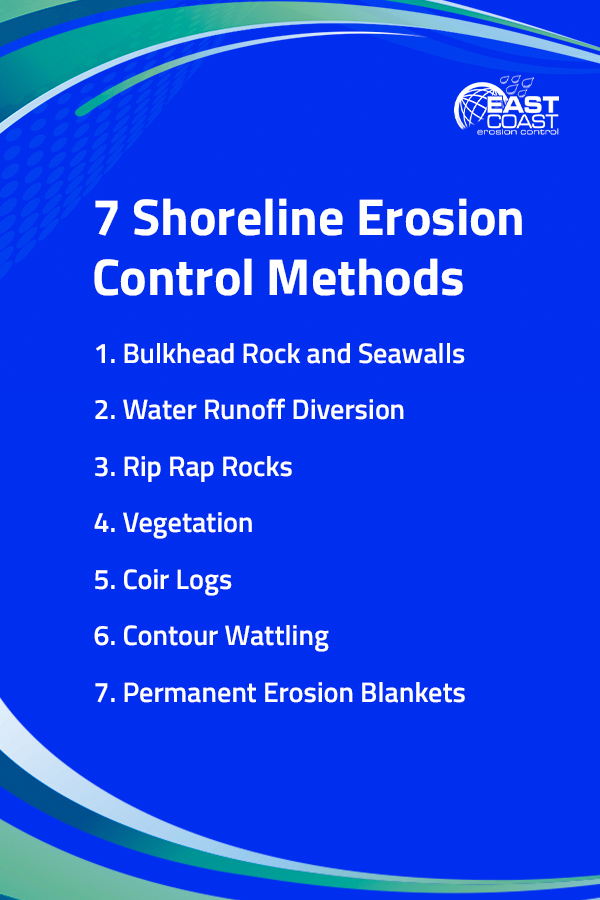
How to Use Turf Reinforcement Mats for Waterfront Erosion Prevention
Permanent rolled erosion control products (TRMs) are a viable method that will stabilize the shoreline, protecting coastal properties from erosion without causing environmental consequences. The TRMs at East Coast Erosion Control are simple to install and maintain due to their comprehensive guidelines. The following five steps will help you use TRMs for shoreline erosion prevention:
- Prepare the slope: The prepared area must be cleared of rocks, soil clumps and other obstructions. Spreading seeds across this area where the mat will be laid is optional yet recommended for increased germination.
- Lay the TRM: Starting at the top of the slope, roll each TRM across the prepared area. Overlap each blanket with the next by about 3 to 4 inches to ensure total coverage.
- Secure the TRM: Using specific soil staples, secure the center of each TRM. The staples should be driven down into the soil through the matting and spaced according to the manufacturers recommendations.
- Spread the seeds: Spread seeds for native grasses and plants over the matting. This action will facilitate germination and stabilize the soil once the roots begin to intertwine with the blanket.
- Spread the soil: Thoroughly spread soil over the TRM to ensure the seeds take root. There should be a layer of soil about 1/2 inch to 3/4 inch over the matting.
View the Products at East Coast Erosion Control Today
East Coast Erosion Control offers both temporary rolled erosion control products and permanent TRMs perfect for waterfront property erosion control. Our signature product, the T-RECS Blanket, delivers the best performance for shoreline erosion control on waterfront properties. We proudly serve shorelines and coasts across the U.S. with our range of high-quality, manufactured erosion control products.
View our erosion control blanket products online now, or contact us for more information about our products. Not sure what erosion control blanket is suitable for your waterfront property? Try our ECDesigner™ tool to find the best solution for you.
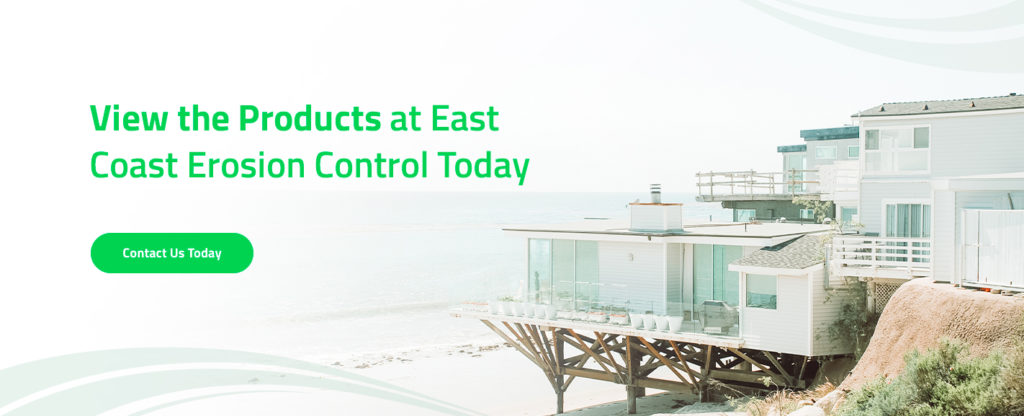

Further Reading
Guide to Protecting Waterfront Property From Erosion
When shoreline erosion occurs, significant problems arise for the environment and surrounding waterfront properties. Your…
Environmental Benefits of Erosion Control
In many applications like construction, vegetation removal leaves the landscape vulnerable to erosion, which washes…
Essential Today: Erosion Control Blanket Manufacturing
Why Are We Essential Erosion control products are designed to protect drinking water nationwide. Water…
